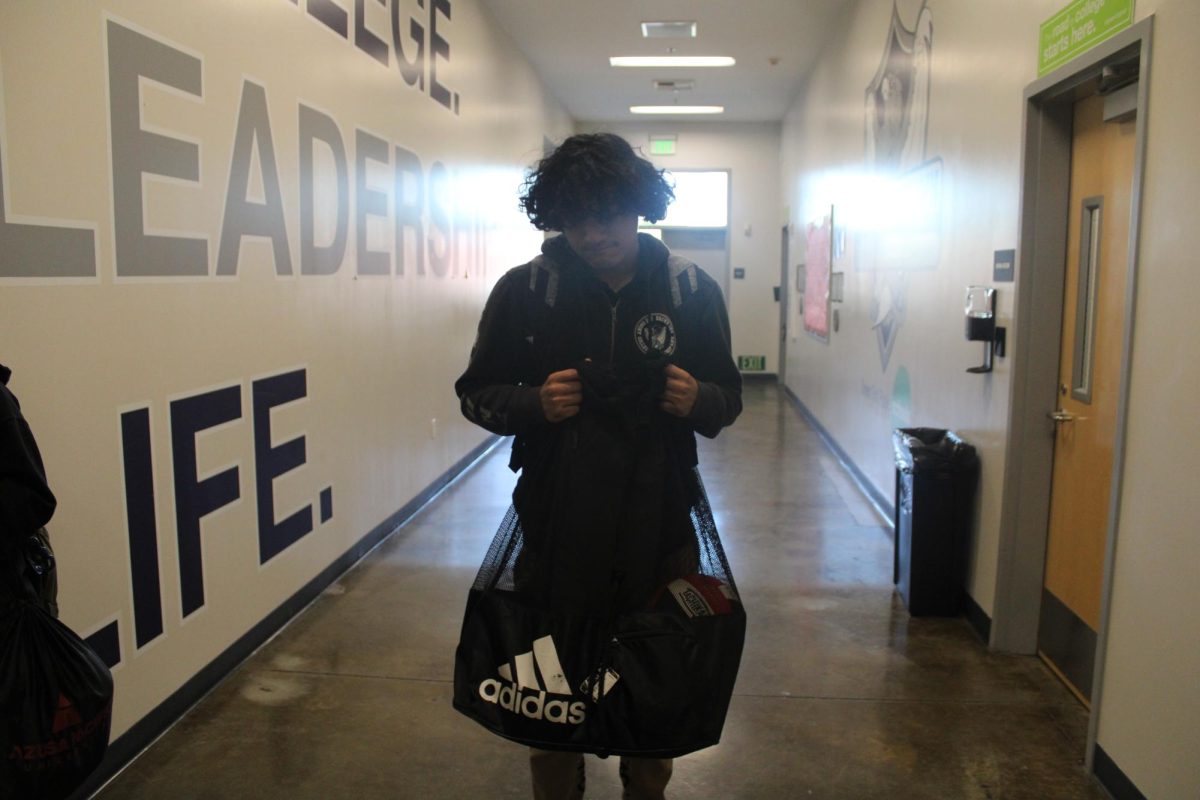
When it comes down to choosing a college or university to attend,it may seem simple. Students narrow down their list of schools by their top priorities; however, theone thing that might weigh out all other considerations is their tuition.In fact, for some seniors, paying for college starts while they are still in high school, around November, when they begin the application process for colleges.
For Cal State Universities the application fee is $50 and the application fee for every UC school is $70. When APB students apply to a private school, the application is often free because the online common application offers fee waivers. However, not all students qualified for fee waivers because of their parents’ salary. Senior Dennis Godinez said he paid $280 in total for college applications.
“I did have to pay $70 dollars for each school that I applied to,”he said. “The schools I applied to were UC Santa Barbara, UC Riverside, UC Irvine, and UC Berkeley.”Dennis found out this spring that he was accepted to all four of those schools, and will be attending UC Berkeley in the fall to study pre-law.
Due to the recession, many parents’ incomes have been affected, and it puts every student in different situations, like if be the parents are able to pay more or less for school. Parents are not always able to provide all the money needed, especially when great numbers of payments are needed for college tuition.
“It was difficult because I did not get a lot of money from FAFSA so I had to pay more; I have to take plenty of loans to cover the tuition to attend Cal State LA,” senior Sarah Vasquez said.
FAFSA stands for Free Application Federal Student Aid; it is an online application that gives money to students to help pay for college. FAFSA usually includes loans, scholarships, and work study which allow students to pay for college. Students’ economic status state the amount of help he or she receives from FAFSA, which puts students in a tight situation when their parents make a decent amount of money because they do not receive as much help.
Students are put in a stressful situation because they need to find different alternatives to pay for college. At first, filling out the FAFSA was an easy process for senior Stephanie Garibay, because both of her advisors guided her through the application. After receiving the FAFSA, however, she did not receive as much as she expected.
“I regret not applying for enough scholarships, that way I would have attended my dream school, Westminster, in Utah,” Stephanie said.
Sometimes FAFSA, EOP, or Cal grants are not enough to pay for colleges. Parents of students make an adequate amount of money to help students, but they also have to cover other expenses like house payments, food, clothing, and personal expenses.
Around March and April, most colleges have already made their decisions on whether to accept, deny, or wait-list students. As a result, the students start to receive e-mails or mail about any financial aid which can be scholarships given by the school, FAFSA, and any other EOP information.
Even when students apply to the schools they want to go to, Seniors have one thing on their mind: can I afford this school?
Set off to UC Merced
At first, Rafael Guevara did not want to attend UC Merced because in his mind the school for him was Cal State University of Pomona, because if he was admitted he was going to get the full scholarship, but he was denied. Therefore, Rafael was planning on going to Los Angeles Community College which also provide him a full scholarship to attend, since he could not afford attending UC Merced.
“On April 4th, I got home and got the letter that said I got a full ride to UC Merced,” Rafael said.This changed everything for Rafael because it meant he will be paying $0 for college tuition. Not being able to receive the scholarship would have made it difficult to get the money to cover the expenses. Thus, the scholarship he received covers most of the tuition.
He is left with $5,000, which he decided that will be spent on getting an apartment, since paying for a dorm is $ 7,000.
It is important for students to stay motivated, especially in stressful times.“Don’t give up. Hard work pays off,” Rafael said. “Stay hopeful and keep trying because things will eventually have a good result.”
Senior Denise Arzola, like Rafael, received money to pay for college and will be attending UC Merced in the fall as well.“My financial aid package almost gave me a full ride,” Denise said. They are both excited to start a new experience at UC Merced without worrying about college payments.
The right fit: CSULA
Senior Clarisa Fijar had her heart set on Whittier College. It had everything in her checklist: major, distance, environment, and class size.
“When I saw the application I was excited because it had my major and it is a small school,” Clarisa said.
Whittier was the perfect school for her, she was even accepted to attend, but then she looked at her acceptance and realized the school only gave her $10,000 in financial aid. The total cost of tuition and fees for Whittier is $36,992.
“To cover school, every year my parents were expected to take out $17,000 loans to help me,” Clarisa said. Despite receiving work study, there is a limit in having work study, which will only help by giving her $2,5000.
Therefore, instead of attending her dream school, she is currently planning to attend California State University Los Angeles because it is her second top university, and she had to take out fewer loans. The cost of living on campus at Cal State LA is $23,726, but Clarisa is not going to live on campus. Since she is going to commute to school, the cost for her will be $17,675.
Going to CSULA, is still exciting for her because in some aspects, the school fits some factors that she is looking forward to in a college. “I really want to go to college and they accepted me based on my major,” Clarisa said. “However, I have not yet received any information regarding EOP help, but I might be eligible for an honors program.”
Clarisa is not dorming for her freshman year, but hopes to do so in her sophomore year to get the college experience.
Getting a fresh start at Long Beach Community College
FAFSA sometimes does not cover half of what you are paying and many students have to give up on their dream school because it is too expensive. Privates are especially more expensive since they are not funded by the states, they have smaller classes, and they provide a one-on-one education for students. Although senior Darnell McClendon never had a specific school that he strived to attend to he said, “living in Los Angeles,every teenager wants to go to University of Southern California.” Darnell said that USC has always drawn his attention, but he admits that because he did not try enough to do well in school, he is going to Long Beach Community College.
Attending a Community College is the alternative to a Cal State University, UC schools, and private schools. Not only is it less expensive, but it also saves student money, and gives students the opportunity of exploring classes of their choice and then to transfer to finish their last years at a Cal State, UC, or private school. Going to Long Beach Community College encourages Darnell to do well in college to get closer to his career since his financial aid covers for his first year. In order to maintain his momentum he wants to get a job to pay for the rest of the years.
“I want to transfer to Cal State University Long Beach even if I have to take out loans,” Darnell said. The costs of attending Cal State University Long Beach is $4,400 for room and board, $1,666 for books, $1,482 for travel , $2,860 for own expenses; in total, it is $17,146. Loans are an option to pay for college, but many do not take out any because they are afraid of being in great debt after graduating.
Subsidized loans are loans that do not charge the student interest until after they graduate from college.
“I recommend taking out subsidized loans because they don’t charge interest until after you graduate,” Ánimo Pat Brown mathematics teacher Jose Ramirez said.
It is important to research numerous scholarships, choose scholarships that best meet your needs, and get a part time job to save as much money as possible.



































